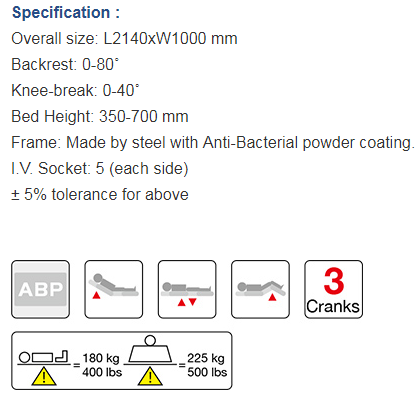2 crank vs 3 crank hospital bed
Manual crank hospital beds are frequently chosen in government tenders and are a primary consideration for hospital purchases. This is because many patients in the hospital are not completely paralyzed. With a manual crank system, caregivers or the patients themselves can adjust the bed to a comfortable position. A two-crank hospital bed allows for the backrest and knee sections to be adjusted up and down, while a three-crank hospital bed offers the additional function of integral height adjustment.
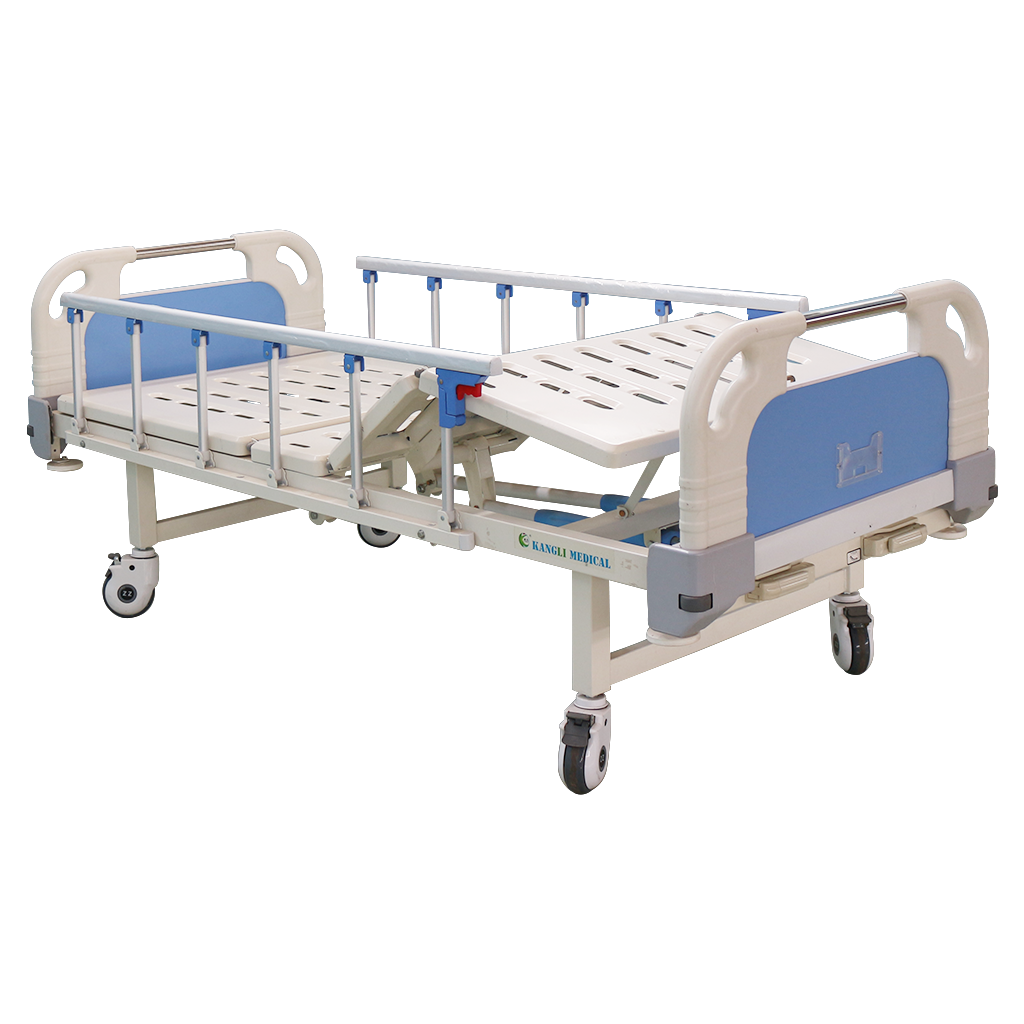
3 Crank Hospital Bed Ajustment Position: knee, backrest, and height adjustment.
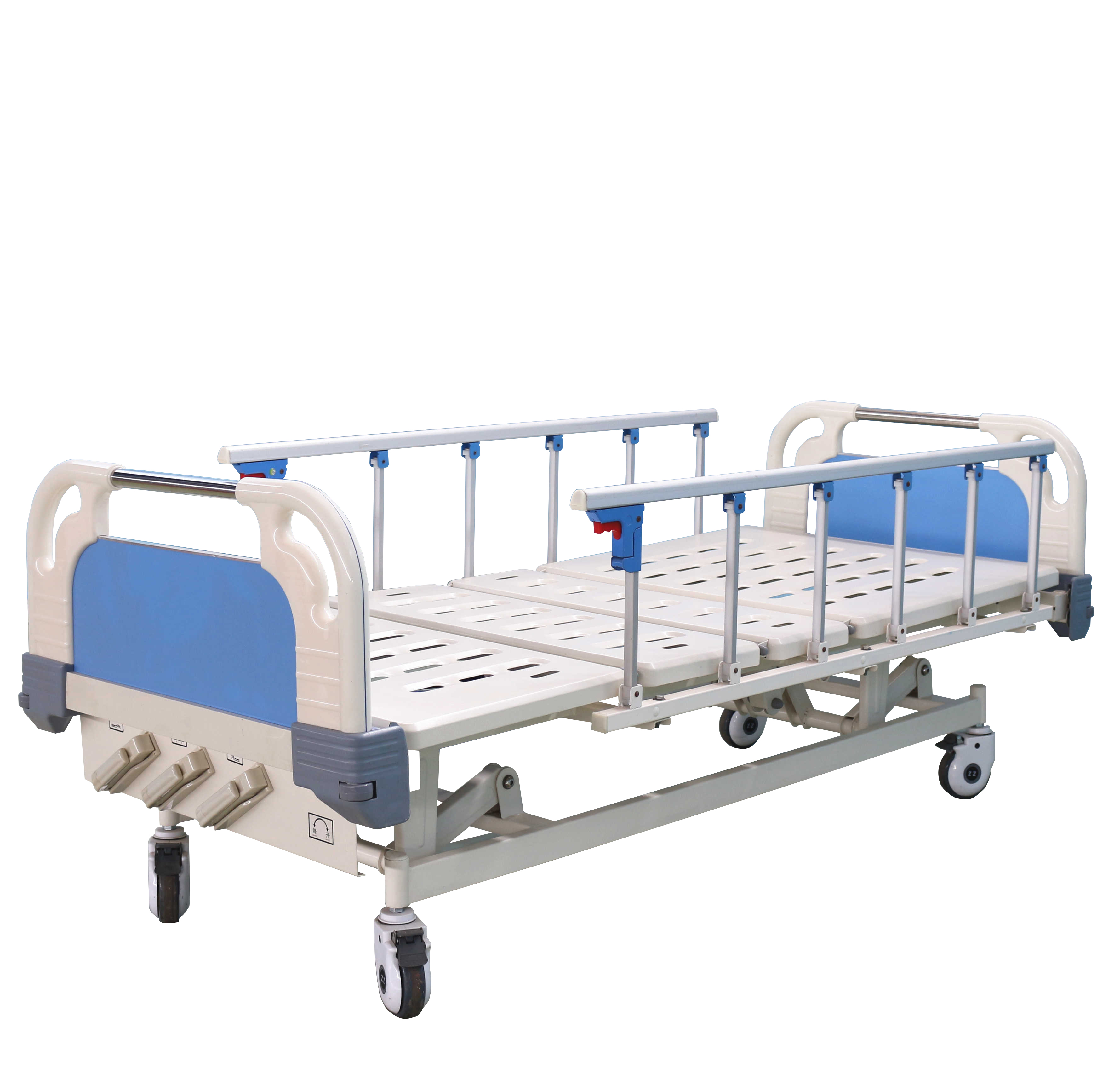
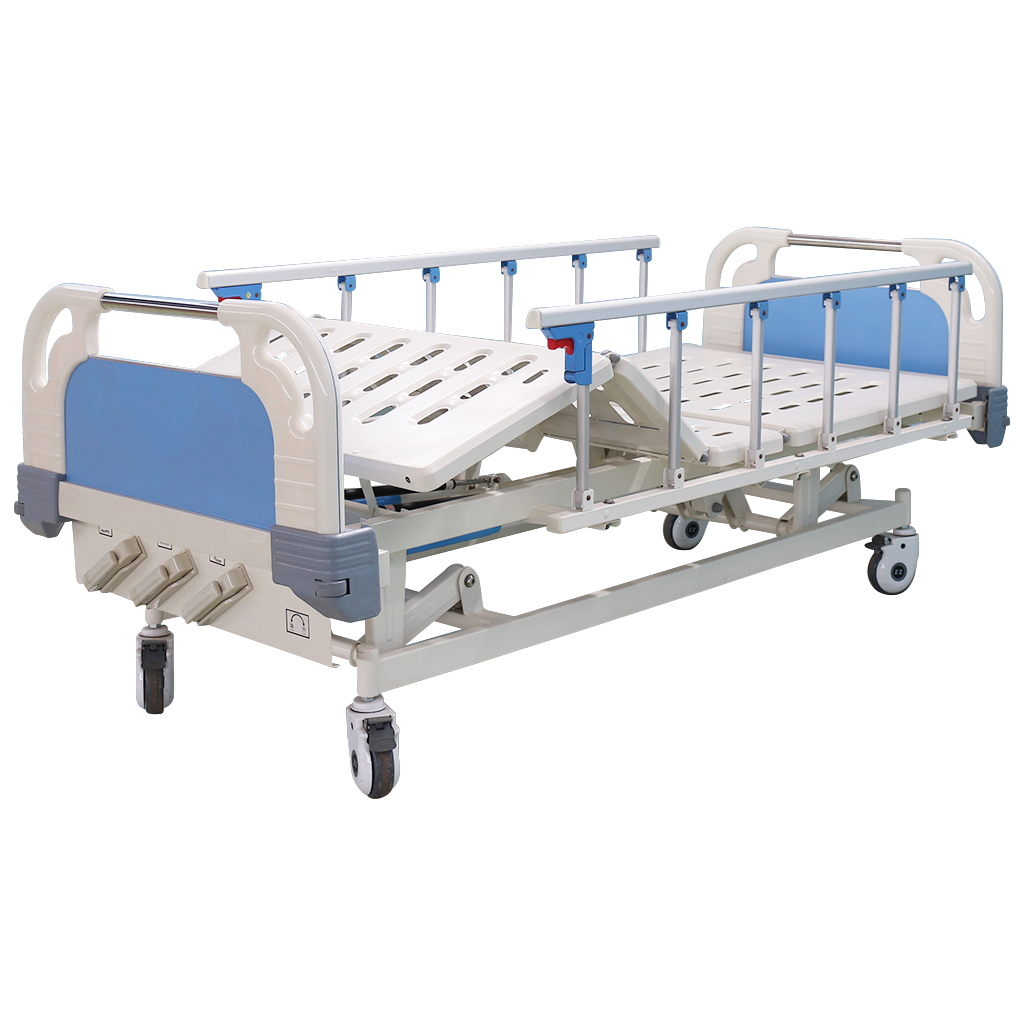
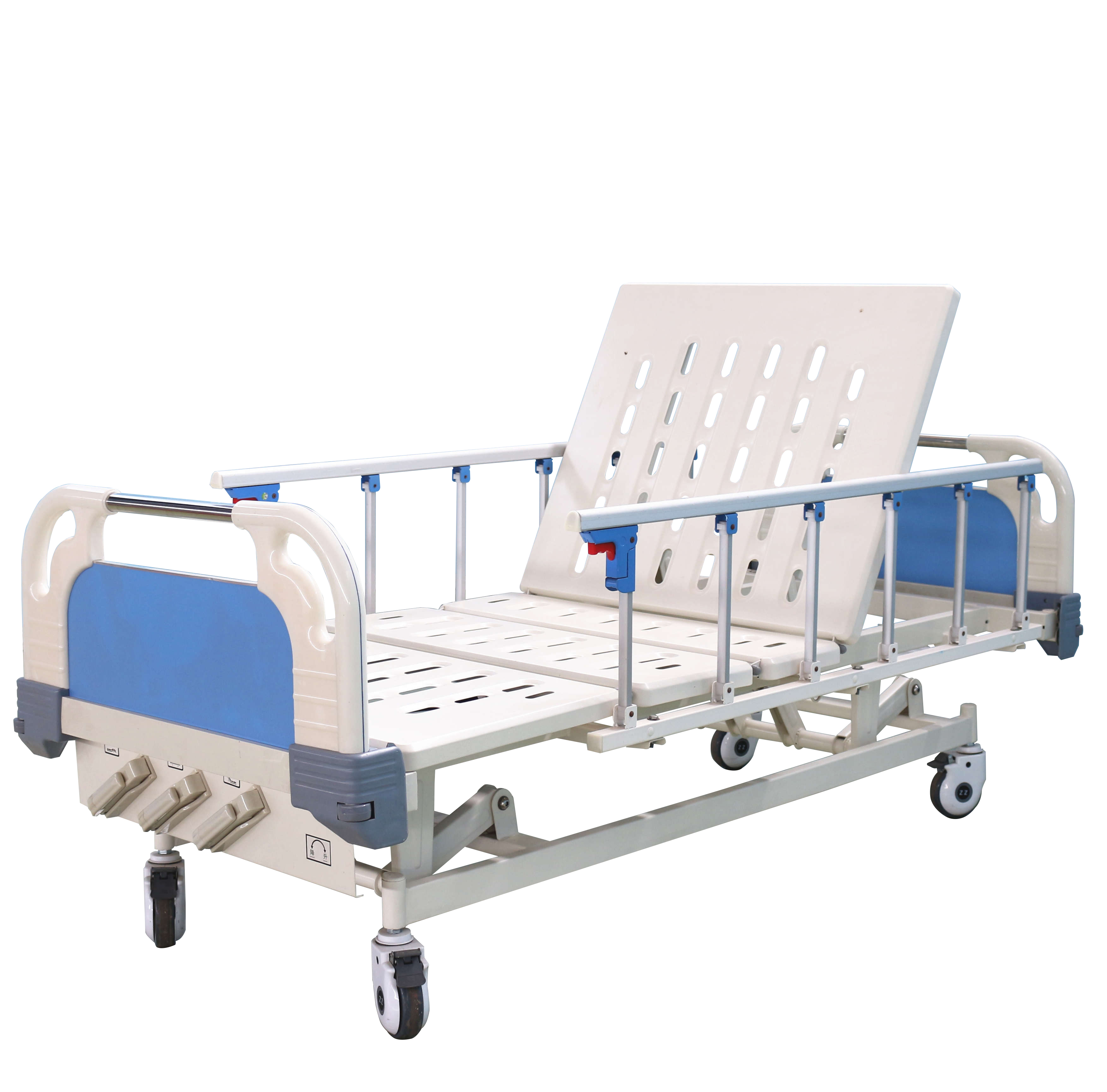
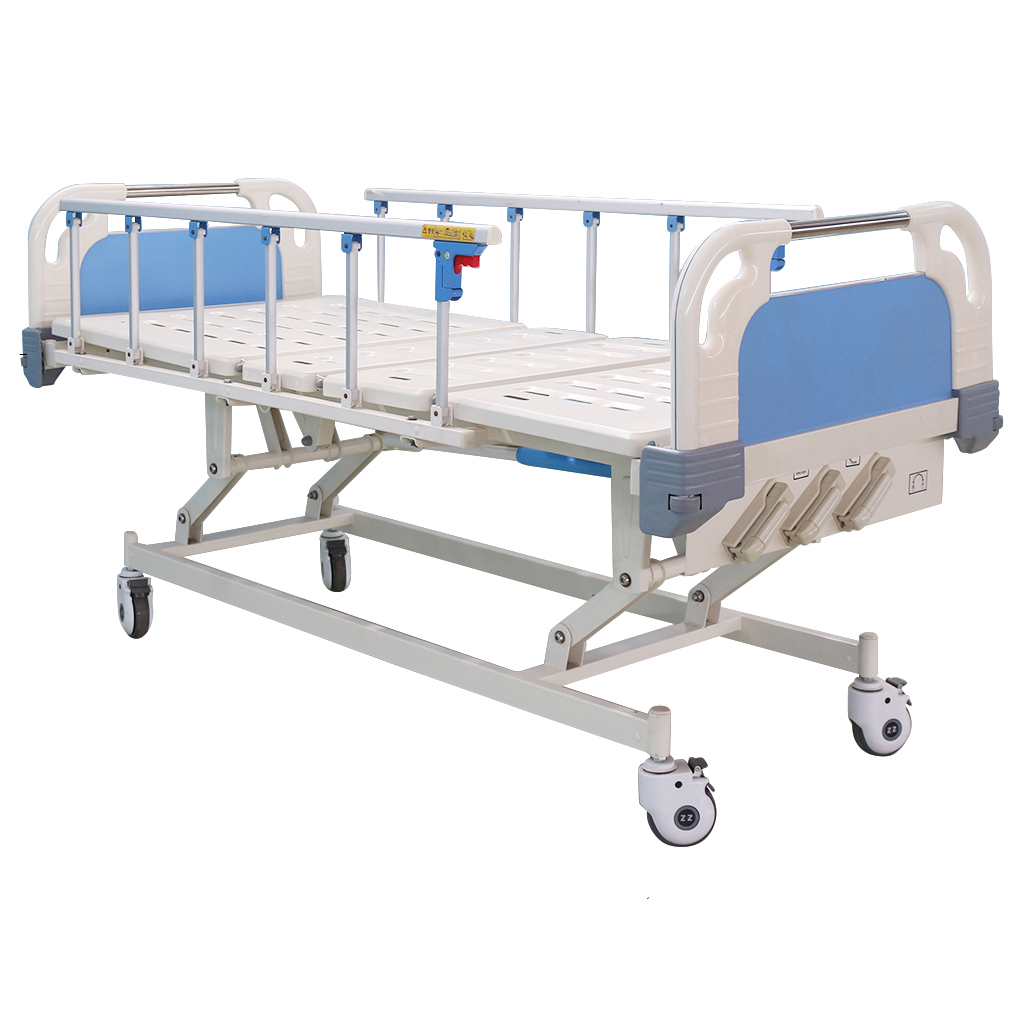
Comparation Table in General
| Feature/Aspect | 2 Crank Manual Hospital Bed | 3 Crank Manual Hospital Bed |
| Main Functions | – Backrest adjustment (up/down)
– Knee adjustment (up/down) |
– Backrest adjustment (up/down)
– Knee adjustment (up/down) – Integral height adjustment (up/down) |
| Height Adjustment | Not available | Available (high-low function) |
| Ease of Use | – Manual cranks at footboard
– Suitable for patients with partial mobility to adjust themselves |
– Manual cranks at footboard
– Extra crank for height adjustment – Ideal for caregivers/nurses |
| Mobility | 4 universal castors for easy movement and direction control | 4 universal castors for easy movement and direction control |
| Typical Use Case | – General hospital wards
– Elderly nursing homes – Home care for patients with partial mobility |
– Hospital wards with diverse patient needs
– Cases requiring height adjustment (e.g., complete paralysis) |
| Popularity in Tenders | Most popular due to lower cost and sufficient functionality | Also common but less popular due to higher cost |
| Cost | Lower cost, more budget-friendly | Higher cost, especially from branded manufacturers |
| Patient Suitability | Best for patients who can adjust positions themselves or with minimal assistance | Ideal for patients with complete paralysis or needing caregiver assistance for bed height |
| Common Names | 2 Crank Manual Medical Bed | 3 Crank Manual Bed, High-Low Hospital Bed |
| Availability | Widely available for hospital and home use | Available, including “cheap” models, but less common in home use |
Key Insights for Hospital Tenders and Purchasing:
2 Crank Beds:
- Best for: Budget-conscious hospitals, nursing homes, or home care where patients have partial mobility.
- Advantages: Cost-effective, simple to operate, meets most patient comfort needs with backrest and knee adjustments.
- Limitations: Lacks height adjustment, which may be inconvenient for caregivers handling fully paralyzed patients.
3 Crank Beds:
- Best for: Hospitals with diverse patient needs, especially for fully paralyzed patients requiring height adjustments for transfers (e.g., to wheelchairs or commodes).
- Advantages: Offers height adjustment for caregiver convenience and patient safety; versatile for various medical scenarios.
- Limitations: Higher cost, especially from top hospital bed manufacturers, may strain budgets in large tenders.
Mobility: Both bed types feature 4 universal castors, making them flexible for moving patients to hospital gardens, testing areas, or other locations.
Tender Considerations:
2 Crank Beds are the most popular in government tenders due to lower costs and sufficient functionality for most patients.
3 Crank Beds are also frequently included in tenders but are prioritized when height adjustment is critical (e.g., for paralyzed patients or specialized wards).
Recommendations:
For Hospitals: Prioritize 2 crank beds for general wards to optimize budget while meeting most patient needs. Include 3 crank beds in tenders for specialized wards or where paralyzed patients are common.
For Home Use: Opt for 2 crank beds unless the patient requires height adjustments due to severe mobility limitations.
For Tenders: Balance cost and functionality by specifying a mix of both bed types, ensuring compatibility with universal castors for mobility.
-
Branded manufacturers like Anyang Top Medical offer both 2 and 3 crank beds, but 3 crank models are notably more expensive.
Premium 3 crank hospital bed specification:
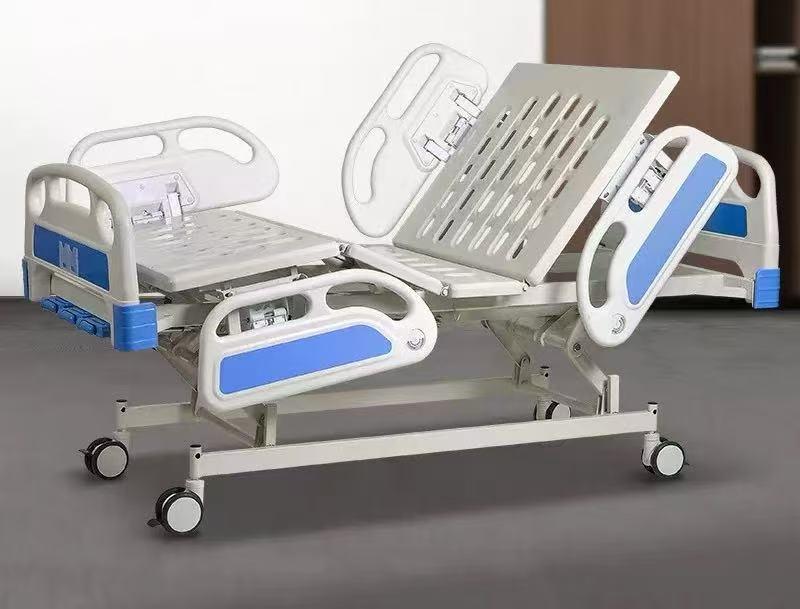
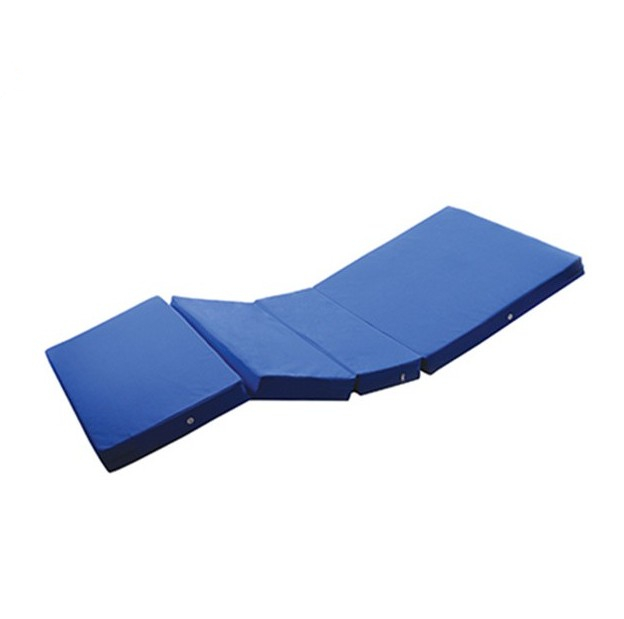
| Parameter | Specification |
|---|---|
| Dimensions | |
| Overall Length | Approximately 80 inches / 2150 mm |
| Overall Width | Approximately 36 inches / 950 mm |
| Height Adjustment | Between 18 inches to 30 inches / 550 mm to 750 mm |
| Weight Capacity | |
| Load Capacity | Kg |
| Frame | |
| Material | Heavy-duty steel construction |
| Finish | Epoxy powder-coated for corrosion resistance |
| Crank Mechanism | |
| Type | Manual crank system with three functions: |
| – Head elevation: 0 to | |
| – Foot elevation: to | |
| – Height adjustment: 550 mm to 750 mm | |
| Crank Location | Accessible from the side of or beneath the footboard |
| Wheels | |
| Type | Single lockable caster wheel |
| Size | 6 inches in diameter |
| Safety Features | |
| Side Rails | 4 Pcs ABS guardrails, tuck away design |
| Patient Locking System | 4 pcs castors with lockable pedal |
| Accessories | |
| IV Pole Mount | Fits 4 position socket, adjustable height, with 4 pcs drainage hooks |
| Mattress | Size: 2000x900x80mm, impermeable cover |
| Bumpers | 4 pcs available on the head and footboard angle |


